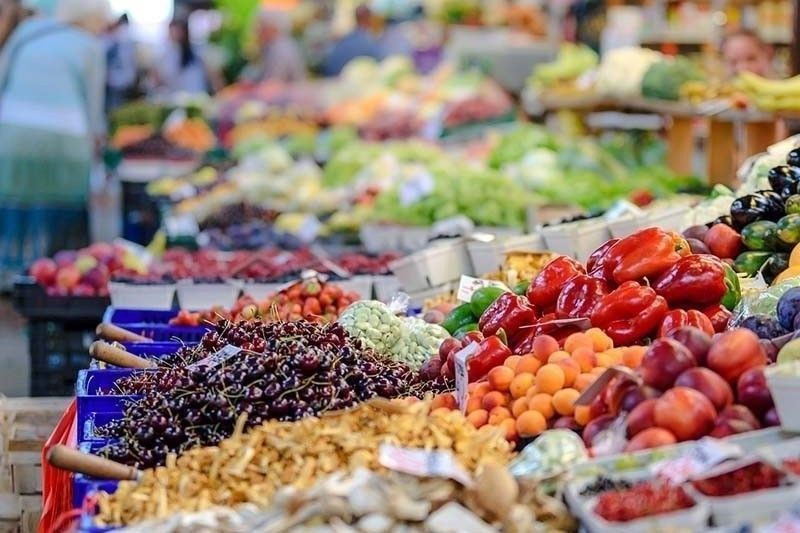Inflation highest in nearly 2 years

MANILA, Philippines — Prices of basic goods and services went up for the third straight month in December to reach a near two-year high at 3.5 percent, driven by higher cost of food and transportation, the Philippine Statistics Authority (PSA) said yesterday.
In a report, the PSA said headline inflation – the rate of increase in the prices of goods and services typically purchased by consumers – quickened further from 3.3 percent in November, the fastest since it clocked at 3.8 percent in February 2019.
This brought average inflation in 2020 to 2.6 percent, still falling within the government’s target of 2.4 to four percent for the year.
The PSA said the uptick in inflation was noted as food prices remained high in December, fueled by increased demand during the Christmas season and supply bottlenecks caused by the lingering effects of a series of strong typhoons in November.
Growth in the index of food and non-alcoholic beverages, which had a 54 percent share to the headline rate, accelerated to 4.8 percent in December from 4.3 percent in November.
Faster growth was seen in the prices of vegetables, particularly for tomatoes and onions, as well as meat.
Pork prices, for instance are limited by the continued presence of African swine fever (ASF) in some provinces, while spikes in the prices of vegetables indicate that there were spillover effects of typhoons on farm production.
Rice prices registered a 0.1 percent growth in December after 19 months of deflation as prices continued to rise in the National Capital Region (NCR).
Transportation, which had a 19.6 percent share to the headline rate, accelerated to 8.3 percent in December from 7.6 percent in November as fares for tricycles, jeepneys and buses remain high because of pandemic-related limitations.
Prices in restaurants as well as miscellaneous goods and services, which had a 9.2 percent share to the headline rate, also rose in December by 2.5 percent, faster than 2.2 percent in November.
This was driven by meals, personal hygiene products, and barbershop services.
Uptick in inflation was faster in Areas Outside the National Capital Region (AONCR) at 3.7 percent in December from 3.3 percent in November on high prices of food, transportation and restaurants and miscellaneous services.
“I think this was due to the demand as well as the supply issues created by the typhoons,” said PSA head Dennis Mapa. “We are also still seeing rising transport prices particularly in tricycles.”
Fort instance, in Cagayan Valley which suffered recently from severe flooding, inflation accelerated to 6.6 percent in December coming from an already high rate of 5.2 percent in November.
In contrast, inflation in NCR was slower at 3.2 percent in December from 3.5 percent in November.
Inflation for the country’s poorest households accelerated to 4.3 percent in December from 3.6 percent in November. This brought the 2020 inflation average to 2.9 percent for this income class.
Rising inflation can prompt monetary authorities to limit the easing of monetary policy as the policy rate is already at a record low of two percent, said Michael Ricafort, chief economist at the Rizal Commercial Banking Corp. (RCBC).
“This could limit further cuts in local policy rates for now, in view of negative net interest rates,” he said.
He noted, however, that even if inflation picks up to three percent levels this year—owing to lower inflation base last year— this is still considered benign and as such, a low interest rate environment could still be pursued to prop up the economy.
“The economy needs all the support measures that it could get by way of lower borrowing costs that help stimulate more demand for loans, investments, employment, and other economic activities,” he said.
Ricafort sees the latest spike to be transitory; food prices to ease in the coming weeks once fresh supply comes in and the further easing of limits on public transport can help lower fares.
Acting Socioeconomic Planning Secretary Karl Chua said the recent uptick in prices showed the need to “improve supply chain efficiency to ensure that prices of essential goods and services remain stable.”
Chua emphasized the need to establish processing facilities that will prevent wastage and spoilage of farm harvests, such as the Benguet Agri-Pinoy Trading Center in the Cordillera region where a large part of the country’s supply of vegetables is sourced.
He also underscored the need to set up additional cold storage facilities, warehouses, and post-harvest centers that will further improve supply management in the agriculture sector, especially in times of natural disasters or when there are surplus in harvest.
Online platforms that directly link buyers to producers will also help address issues on logistics.
“The imminent threat of natural calamities every year highlights the need for long-term solutions such as infrastructure investments that would improve flood control, water management and irrigation systems, reforestation, climate-resilient production and processing facilities, among others,” Chua said.
- Latest
- Trending






















